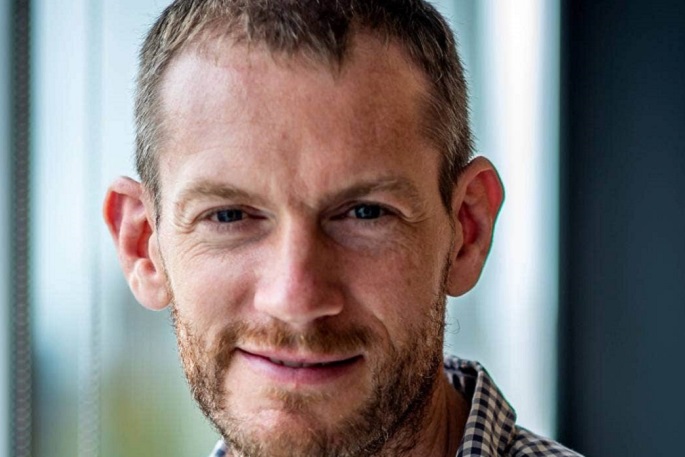When 2023 comes to an end, it will have been nearly four years since Covid-19 emerged.
Over that time, almost 2.5 million cases have been reported in New Zealand, more than 3500 deaths attributed to the virus and many continue to live with the effects of long Covid.
So, with reported cases, wastewater results, hospitalisations and deaths ticking up again, in yet another wave, health experts are asked what’s going on with Covid and what we might expect in the future.
Why are we seeing another wave now?
It’s cyclical, University of Canterbury mathematics Professor and Covid-19 modeller Michael Plank says.
When we have a spike in infections, this builds immunity in the population, which itself causes a wave to eventually come to an end, he explains. Boosters also build immunity.
But over time, immunity – either from infection or vaccination – wanes, and eventually enough people are susceptible to becoming infected again, he says.
 University of Canterbury Covid-19 mathematical modeller Professor Michael Plank says, long-term, endemic Covid-19 might not look that different to what we’re seeing today – but that it’s possible seasonality and severity could change. Photo: Supplied.
University of Canterbury Covid-19 mathematical modeller Professor Michael Plank says, long-term, endemic Covid-19 might not look that different to what we’re seeing today – but that it’s possible seasonality and severity could change. Photo: Supplied.
Another factor is the sub-variants coming into the country: there’s a “different mix” of variants now than during our last wave in April, which will also be contributing to increases, he says.
Ongoing waves are happening all over, University of Otago evolutionary biologist and virologist Professor Jemma Geoghegan says, driven largely by our immunity (how long-lasting it is), and how the virus continues to evolve and adapt to counteract that immunity.
And with such a “complex immunity landscape” now, Michael says it has become harder to predict when and how big waves are going to be.
Is this just how it's going to be forever?
Well, yes and no, experts say.
Covid-19 “isn’t going anywhere”, immunologist Professor James Ussher, from the University of Otago says.
But how it will behave and change in the months and years to come remains the million-dollar question, as “we’re seeing the virus move from the pandemic phase, transitioning into an endemic virus.”
We will likely keep seeing sustained transmission throughout the global population, as we do with rhinovirus, influenza and other coronaviruses – but “what the pattern will look like isn’t entirely clear”, James says.
Te Whatu Ora says we will continue to see fluctuations in Covid-19 cases and deaths, as it is still present in the community.
In the meantime, health officials say rapid antigen test kits will remain free until the end of February 2024; and all remaining free Covid-19 testing sites will close by November 30, 2023.
For now, we’re likely looking at more of the same, Michael says: “It is here to stay”.
“Certainly not with the tools we currently have available... it’s impossible to get rid of Covid.”
The mandatory seven day isolation period for people with Covid-19, as well as the requirement to wear face masks in health facilities, will be scrapped.
So how might things change?
It’s expected that over time, Covid-19 will eventually start to follow a seasonal pattern – similar to what we see with influenza and other respiratory diseases, Jemma says.
While there are cases of these in other seasons, they tend to be in lower numbers, with a peak around winter.
But when – or if – we might see it settle into this kind of pattern remains to be seen.
As such, Jemma, Michael and James all think our future vaccination strategy could likely hinge on whether Covid-19 becomes a seasonal virus.
Michael thinks it likely we’d eventually see an annual booster programme rolled out, potentially in the autumn months, for those at highest risk from Covid-19.
 Professor Jemma Geoghegan says our immunity, and how SARS-CoV-2 continues to evolve to counteract that immunity, remains a major driver of new cases. Photo: Supplied.
Professor Jemma Geoghegan says our immunity, and how SARS-CoV-2 continues to evolve to counteract that immunity, remains a major driver of new cases. Photo: Supplied.
We saw that to some extent this year, he says, with the bivalent vaccine becoming available in April – “chosen, at least in part, to provide immunity for the winter period” in a bid to take some load off the hospital system in the busy winter months, he says.
James says it’s likely we may see yearly updates of the vaccine to better match the circulating virus, in much the same way as annual flu jabs.
What about variants? Could another ‘Omicron’-style variant shake things up?
Jemma says Omicron is “still quite surprising in its evolution” – forever finding new mutations, allowing it to invade our cells better and to replicate faster.
Chronic Covid-19 infections in patients with co-infections that lower their immunity, such as HIV, can allow the virus to gain big evolutionary changes, Geoghegan says.
“There are options for it to make large evolutionary leaps like it did before, like getting from Delta to Omicron.”
Jemma and Michael say this possibility – though difficult to predict, and not guaranteed – is why ongoing genomic and wastewater surveillance is so important, to keep an eye on new variants if and when they emerge.
For now, health officials continue to urge people to take public health precautions, such as staying home if you’re unwell, accessing antivirals early if eligible, and wearing a face mask in closed, crowded or confined spaces.



1 comment
Does this mean...
Posted on 18-11-2023 15:16 | By fair game
if no isolation requirement, the sick leave returns to 5 days per year? As an employer I seriously hope so. This was brought in for isolation requirements only, so should now be overturned.
Leave a Comment
You must be logged in to make a comment.